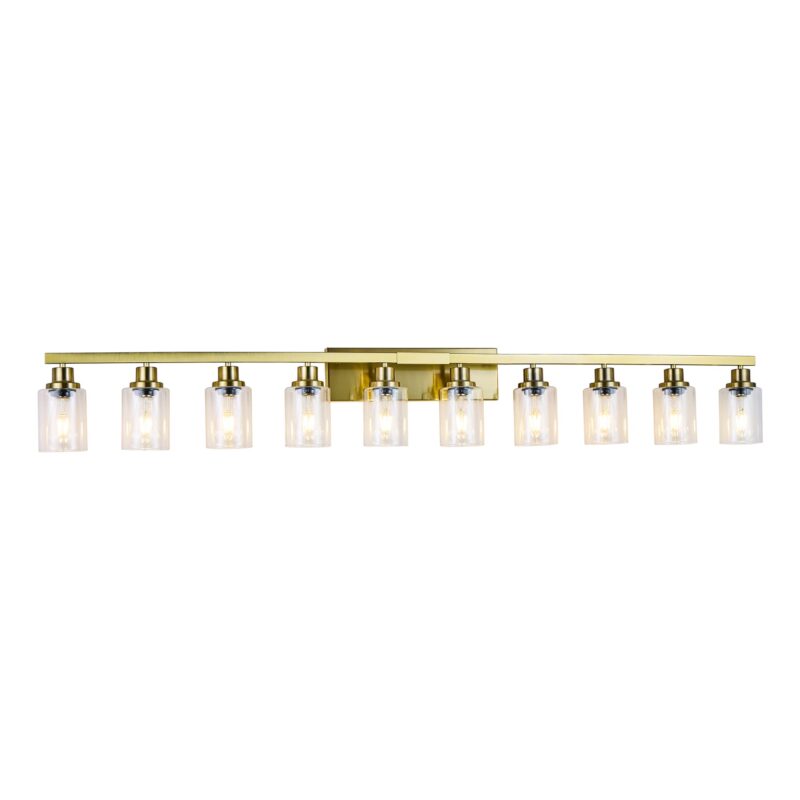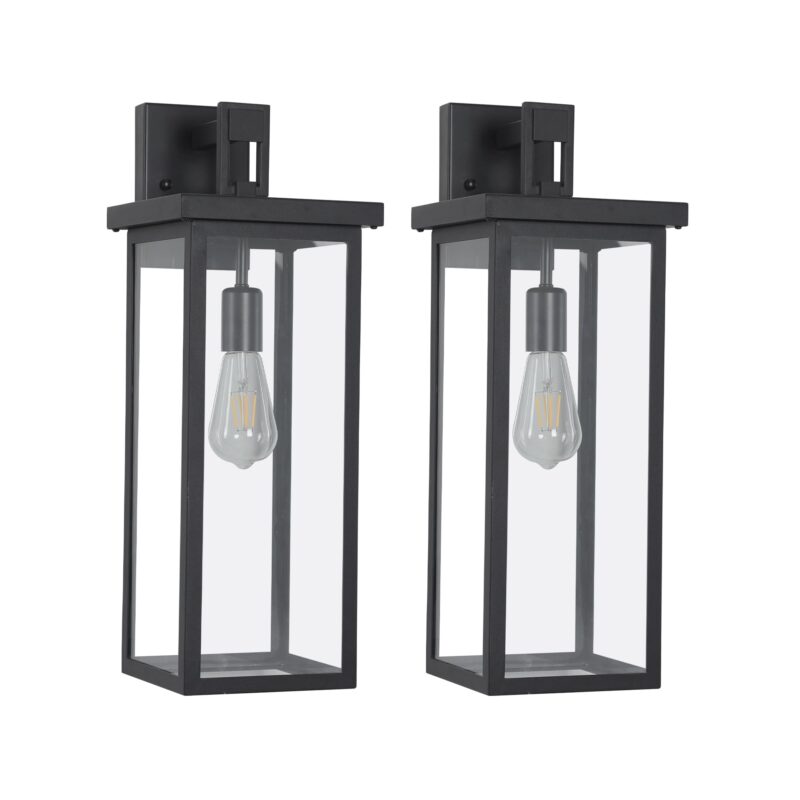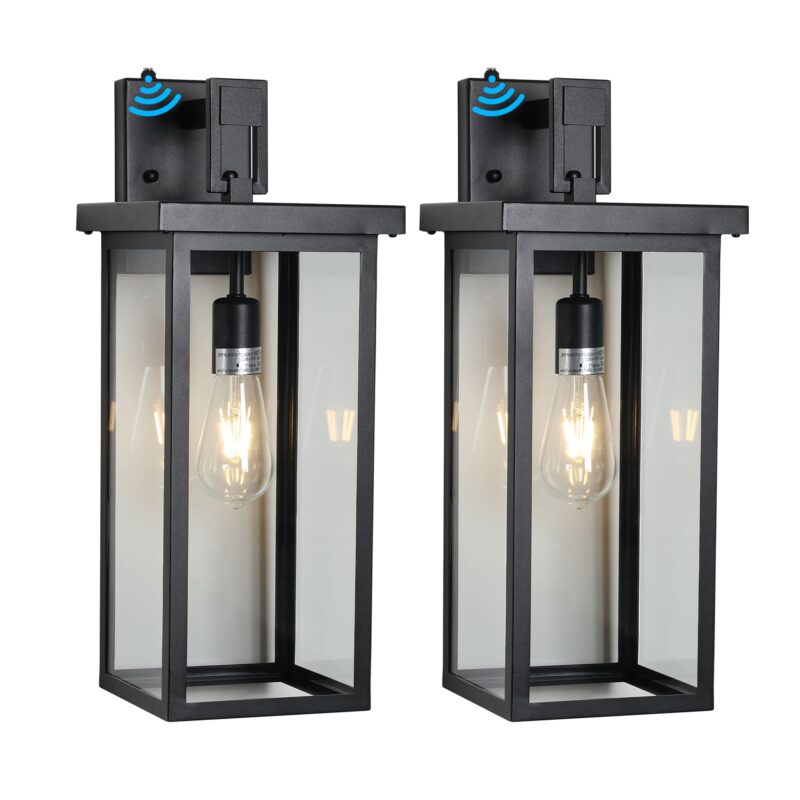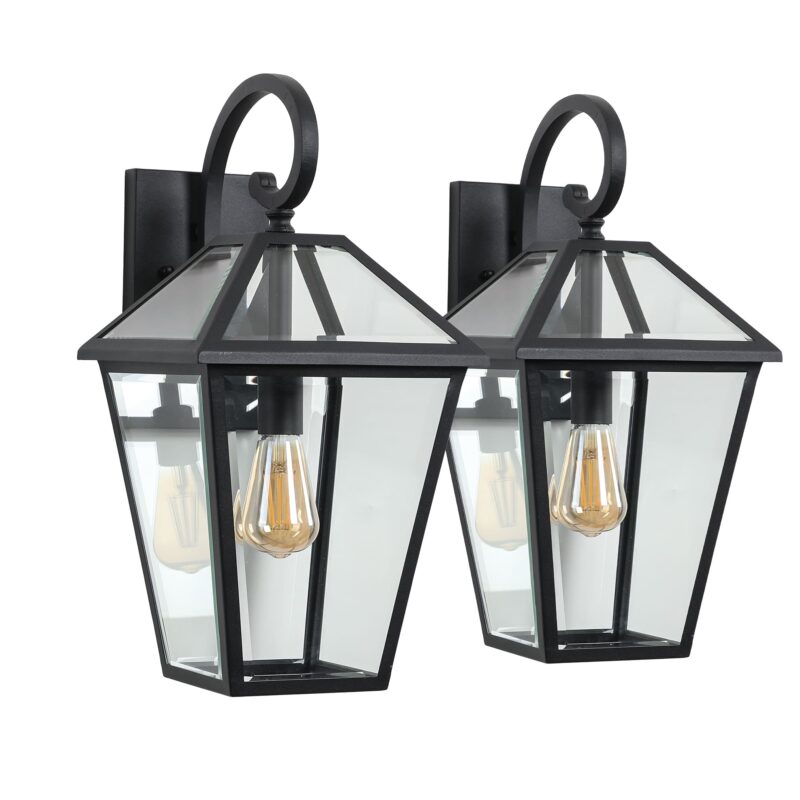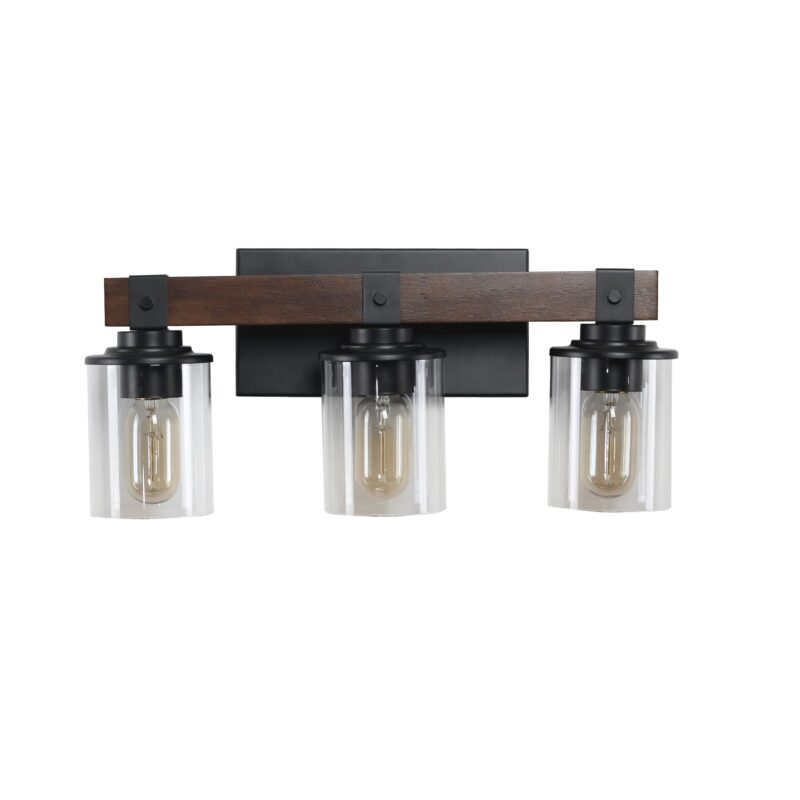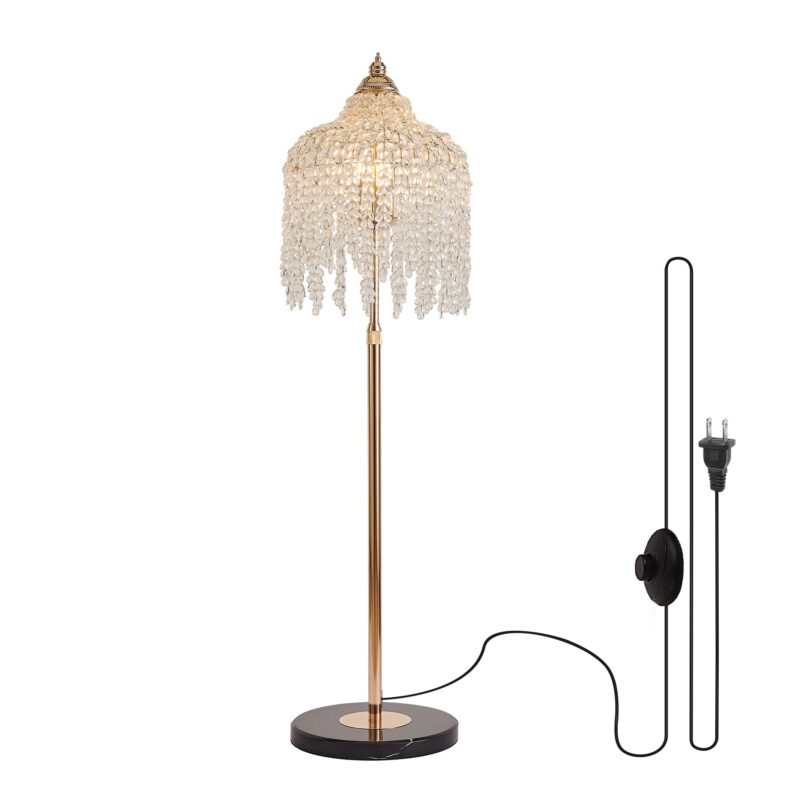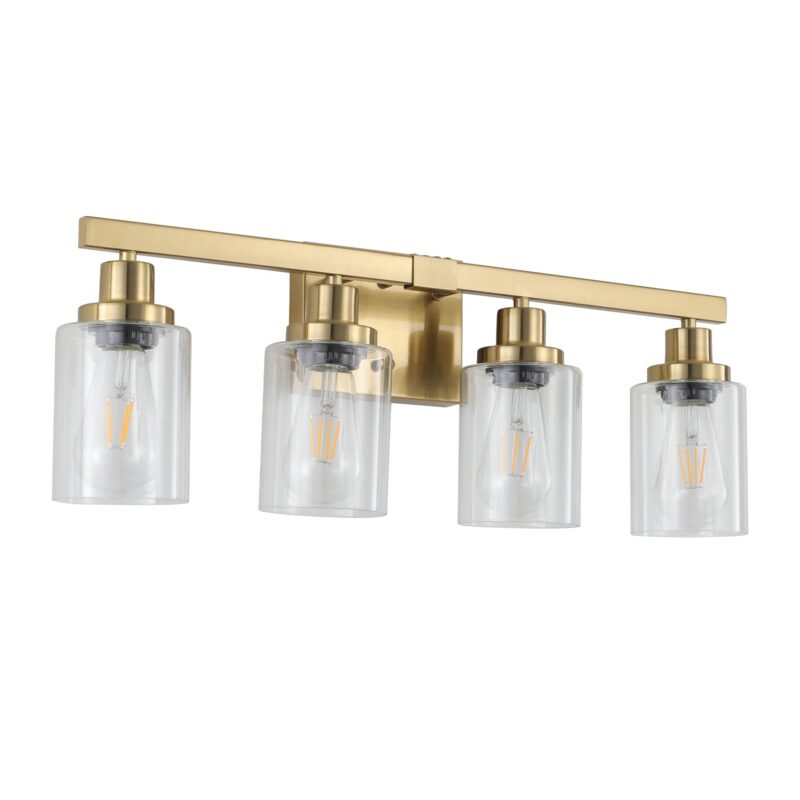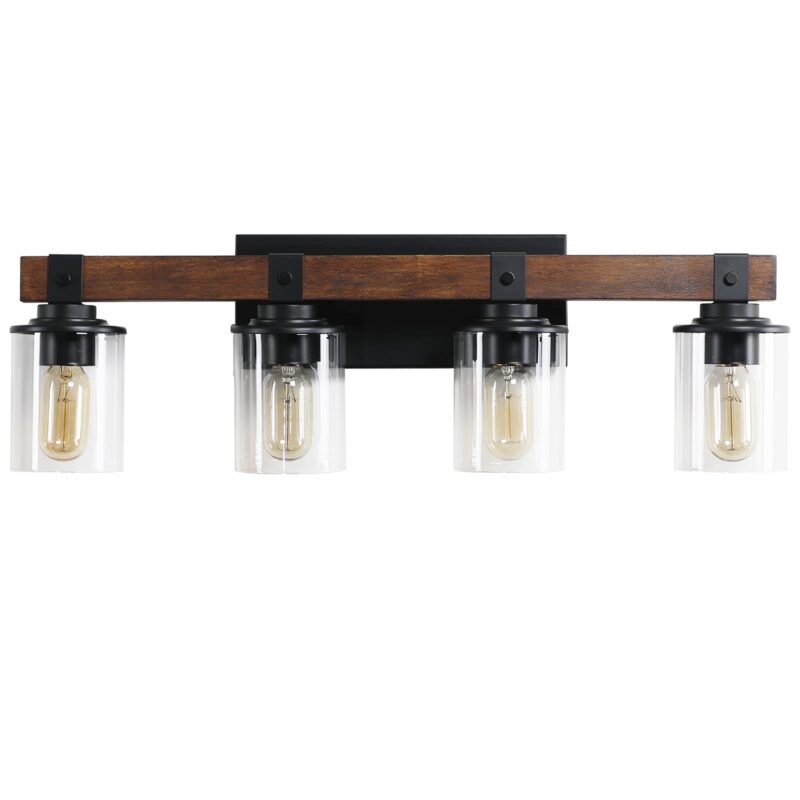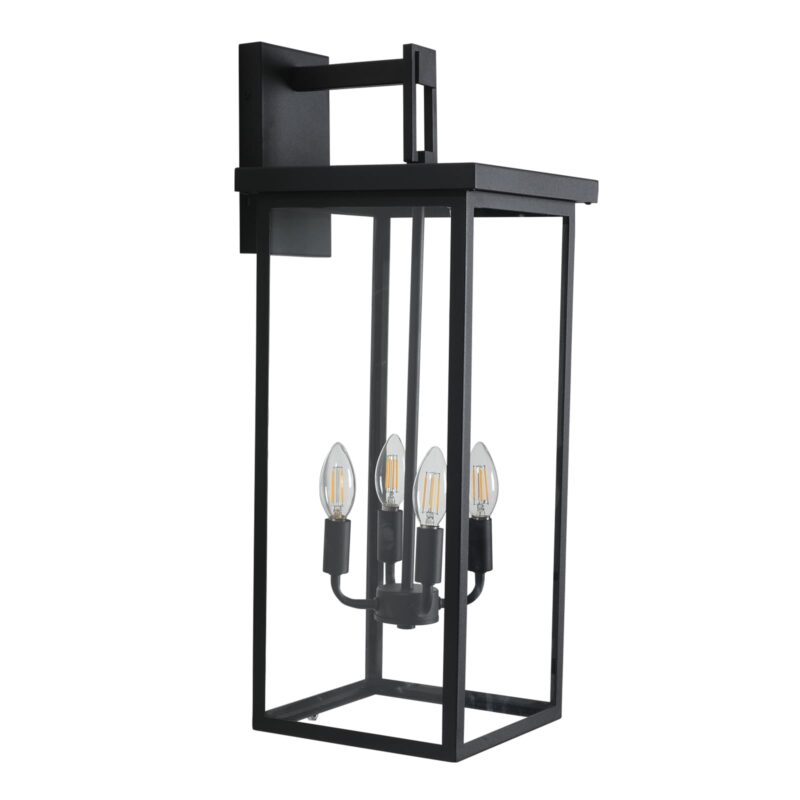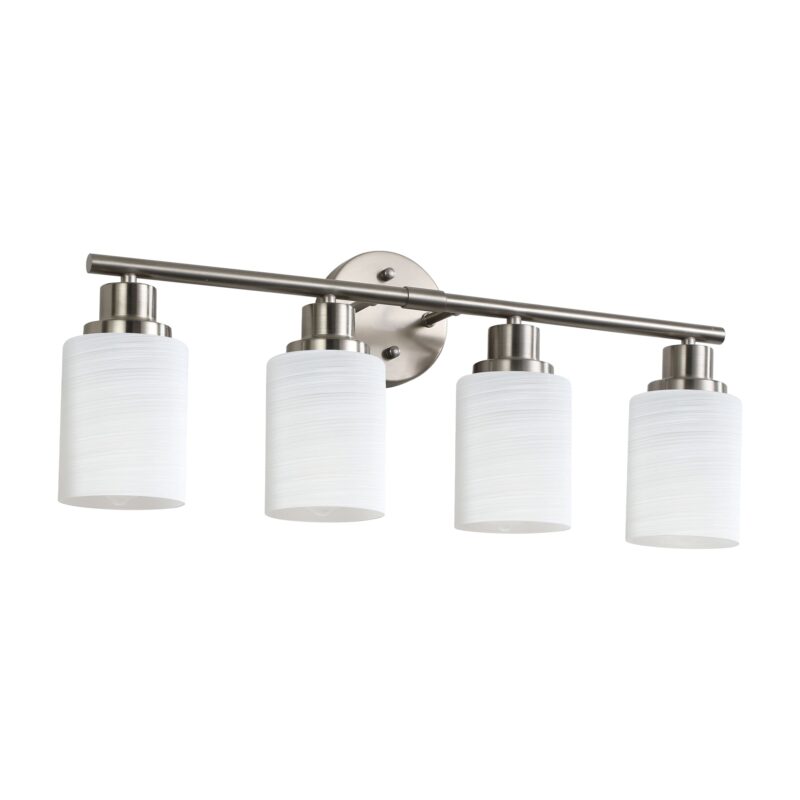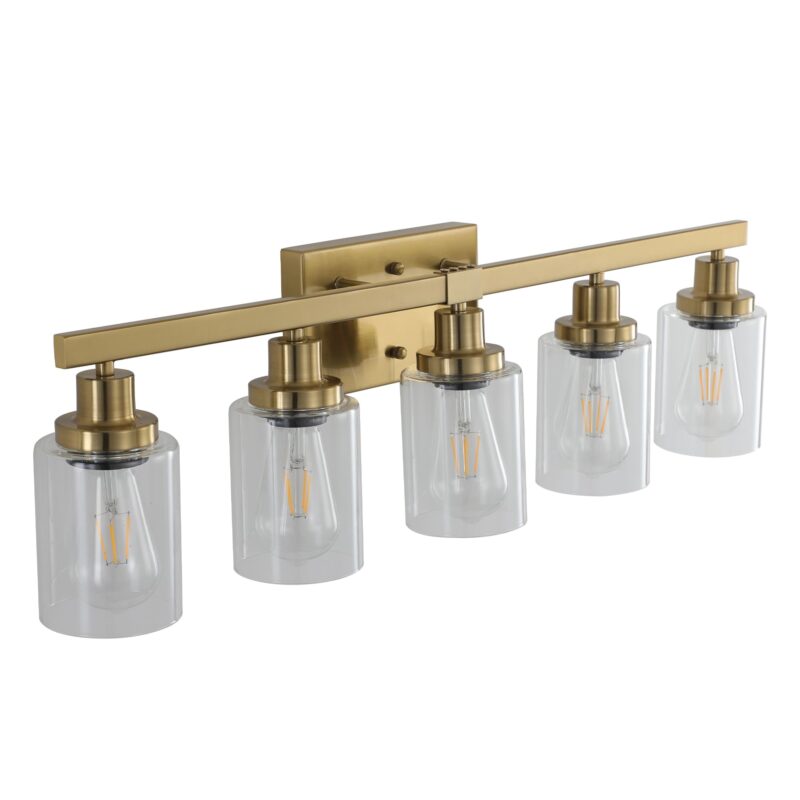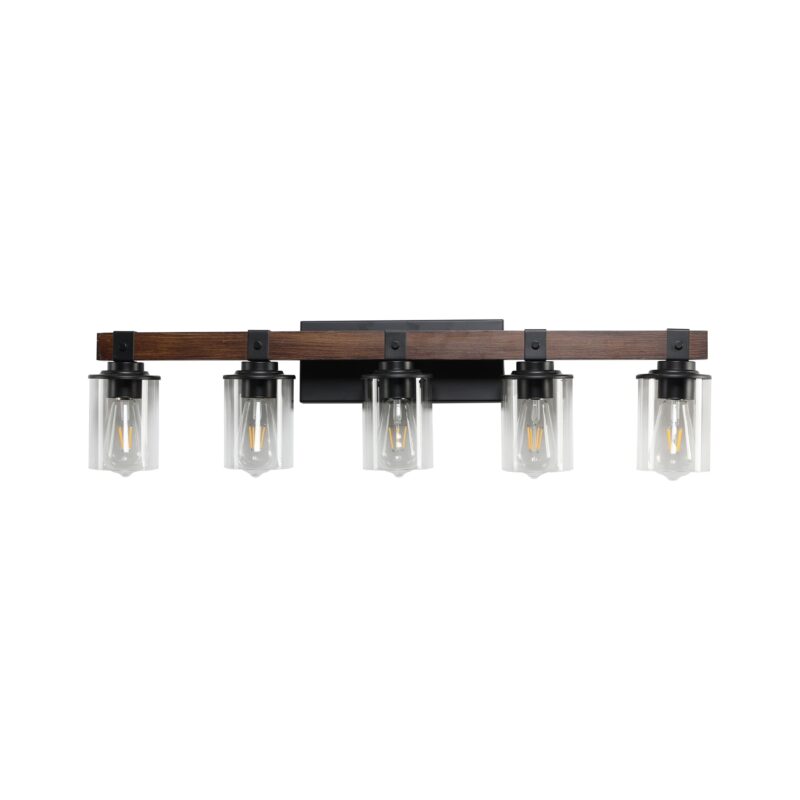Your bathroom is a room of two stories. In the morning, it’s a bustling hub of activity—a bright, functional workspace where you prepare to face the day. In the evening, it transforms into a personal sanctuary, a quiet space to unwind and relax. The unsung hero connecting these two worlds? Your lighting. Poor lighting can cast unflattering shadows during your morning routine and create a harsh, sterile glare when you’re trying to relax. It’s often the last thing people think about in a remodel, but it’s the first thing you’ll notice if it’s wrong.
Choosing the right vanity light isn’t just about picking a pretty fixture. It’s a careful blend of science, art, and practical geometry. You need to understand the language of light—lumens, Kelvin, and CRI—while also considering the visual harmony of style, size, and placement. This guide is your complete resource, designed to walk you through every step of the process. We’ll answer every question, from the basics of what vanity lighting is to the pro-tips that will make your bathroom truly shine.
Table of Contents
What is Bathroom Vanity Lighting and Why is It So Important?
Before we dive into the details, let’s establish a solid foundation. Understanding what vanity lighting is and what it’s supposed to do is the first step toward making a brilliant choice for your home.
Defining Vanity Lighting: The Unsung Hero of Your Bathroom
At its core, **bathroom vanity lighting** refers to the fixtures placed specifically around your bathroom mirror and sink. Their primary job is to illuminate your face and the immediate countertop area. While other lights in the room provide general brightness, the vanity light is your personal spotlight for all the detailed work you do in front of the mirror.
It’s crucial to understand that vanity lighting is first and foremost task lighting. Its purpose is different from the other layers of light in your bathroom:
- Ambient Lighting: This is the room’s main light source, like a ceiling flush mount or recessed lights, that provides overall illumination.
- Accent Lighting: This is strategic lighting used to highlight architectural features or decor, like a small spotlight on a piece of art or in a shower niche.
- Task Lighting: This is focused, bright light for specific activities. In the bathroom, this is the vanity light.
Relying on a single overhead light for everything is one of the biggest mistakes in bathroom design. It creates harsh shadows and makes essential grooming tasks incredibly difficult.
The Critical Functions of Proper Vanity Lighting
A great vanity light does more than just light up a room; it improves your daily life. Its importance can be broken down into four key areas.
1. Flawless Grooming and Self-Care
This is its main job. Without clear, shadow-free light, everyday tasks become a guessing game. Proper vanity lighting is essential for:
- Makeup Application: Seeing true colors and blending foundation, eyeshadow, and blush evenly.
- Shaving: Catching every spot without nicks or irritation.
- Skincare Routines: Clearly seeing your skin to cleanse, exfoliate, and apply treatments correctly.
- Dental Care: Making sure you don’t miss a thing when brushing and flossing.
- Inserting and Removing Contact Lenses: A task that requires precision and clear vision.
- First Aid: Safely removing a splinter or cleaning a small cut.
2. Setting the Right Mood
The right light can completely change the feel of your space. With the simple addition of a dimmer switch, your vanity light can pull double duty. In the morning, you can turn it up for a bright, energizing start to your day. In the evening, dim it down to a soft, warm glow for a spa-like atmosphere while you soak in the tub. It allows your bathroom to be both a functional workspace and a relaxing retreat.
3. Completing Your Bathroom’s Design
Vanity lights are a major decorative element. They are often the focal point of the vanity wall and can tie the whole room together. The style, finish, and shape of your fixture should complement your faucets, cabinet hardware, and overall decor, creating a cohesive and polished look. It’s an opportunity to express your personal style, whether it’s modern, rustic, or glamorous.
4. Supporting Aging Eyes
A crucial consideration for safety and quality of life: According to studies by the Illuminating Engineering Society, individuals over the age of 65 may need up to four times more light than someone under 25 to see properly. This makes effective, bright, and glare-free vanity lighting not just a matter of convenience, but one of safety and independence.
What Are the Different Types of Vanity Light Fixtures?
Once you understand the ‘why,’ it’s time to explore the ‘what.’ Vanity lights come in several primary forms, each with its own set of strengths and ideal applications. Choosing the right type for your space is fundamental to achieving that perfect, flattering glow.
Wall Sconces: The Gold Standard for Flattering Light
Wall sconces are individual light fixtures that are mounted vertically on either side of the mirror. When it comes to providing the most flattering light for your face, experts agree that sconces are the undisputed champion.
- Pros: Sconces create what is known as cross-illumination. By casting light from both the left and the right, they fill in any potential shadows under your eyes, nose, and chin. This provides the most even, balanced, and true-to-life illumination possible, making them perfect for detailed grooming.
- Cons: Their biggest limitation is space. You need enough wall space on both sides of your mirror to mount them correctly. This can make them impractical for small powder rooms or bathrooms with very wide, wall-to-wall mirrors.
- Best For: Master bathrooms, single-sink vanities where grooming is a top priority, and achieving a classic, balanced, and elegant aesthetic.
Vanity Light Bars (Bath Bars): Versatile and Space-Saving
A vanity light bar is a long, horizontal fixture that is mounted directly above the mirror. It can feature a row of multiple bulbs (from two to eight or more) or consist of a single, long tube of light, often using integrated LEDs.
- Pros: This is the go-to solution for bathrooms with limited wall space. A single fixture can provide ample light across a very wide mirror or a double-sink vanity. They offer a clean, streamlined look that works well in modern and contemporary designs.
- Cons: If a bar light is your only source of light at the vanity, it can cast shadows downward. Think of how the sun directly overhead at noon creates harsh shadows—the same principle applies here. This is why pairing it with other light sources is often a good idea.
- Best For: Bathrooms with double vanities, powder rooms with tight dimensions, and anyone seeking a sleek, modern look.
Pendant Lights: A Creative and Stylish Alternative
A growing trend in bathroom design is to use pendant lights—fixtures that hang down from the ceiling on a cord or rod—in place of traditional sconces. They are typically installed in pairs, flanking the mirror.
- Pros: Pendants add a touch of drama and unexpected elegance. They are a fantastic problem-solver for situations where wall mounting is difficult, such as in front of a window or on a fully tiled wall. Their height is also adjustable, offering a unique benefit for children’s bathrooms—you can hang them lower for little ones and raise them as they grow!
- Cons: You must carefully consider the placement to ensure they don’t obstruct the view of the mirror or hang so low that you might bump your head.
- Best For: Bathrooms with high ceilings, adding a unique design statement, and situations where wall space is unavailable.
Lighted and Backlit Mirrors: The Integrated Solution
For the ultimate minimalist look, lighted mirrors integrate LEDs directly into the mirror itself. The light can either shine forward through frosted sections of the glass or emanate from behind the mirror, creating a soft, ambient “halo” effect.
- Pros: This option offers a seamless, high-tech, and space-saving design. It provides a very even, diffuse light and often comes with bonus features like built-in anti-fog heaters and adjustable color temperature.
- Cons: While excellent for setting a mood, some models may not provide the intense, focused light needed for very detailed tasks like tweezing. The forward-facing light can also cause glare, especially for those with sensitive eyes; backlit models that provide indirect light are often a better choice for seniors.
- Best For: Powder rooms where extensive grooming isn’t a priority, ultra-modern and minimalist bathrooms, and for adding a beautiful layer of ambient light to the room.
How Do I Determine the Right Size and Placement for My Vanity Light?
This is where the magic happens. Getting the proportions and positioning right is the difference between a bathroom that looks professionally designed and one that just feels… off. These are not just suggestions; they are time-tested rules that designers follow to ensure both function and beauty.
The Golden Rule of Sizing: Getting the Width Just Right
The size of your light fixture should be in harmony with the size of your mirror and vanity. A light that is too small will look lost, while one that is too large can overwhelm the space.
For Vanity Bars (Mounted Above the Mirror)
The key is balance. Follow these simple guidelines:
- The Main Rule: Choose a fixture that is roughly 75% of the mirror’s total width. This creates a pleasing visual proportion.
- The Boundary Rule: The light fixture should never be wider than the vanity cabinet below it. It’s okay if the light is a little wider than the mirror, but it looks awkward if it extends beyond the edges of the vanity.
| Mirror Width | Recommended Light Fixture Width |
|---|---|
| 24 inches | 18 inches |
| 36 inches | 27 inches |
| 48 inches | 36 inches |
| 60 inches (or Double Vanity) | 45 inches (or two smaller lights) |
For Double Vanities: You have two excellent options. You can install one long light bar that spans about 75% of the entire vanity’s width, or you can mount two smaller, identical light fixtures, each centered perfectly over its own sink. The second option often provides a more balanced and high-end look.
Perfect Placement: How High and How Far Apart?
Where you hang your light is just as important as which light you hang. Incorrect placement is the primary cause of unflattering shadows.
Mounting Above the Mirror (Vanity Bars)
- Height: The fixture should be mounted so its centerline is between 75 and 80 inches from the finished floor. This height ensures the light comes from above your reflection, casting light downward onto your face without being so high that it creates deep shadows.
- Centering: Always center the light fixture with the sink’s plumbing, not necessarily the mirror. Mirrors can sometimes be mounted slightly off-center, but the relationship between the sink and the light is what creates visual symmetry.
Mounting Beside the Mirror (Sconces or Pendants)
- Height: The center of the fixture should be positioned at eye level. For most people, this is between 65 and 70 inches from the floor. This is the secret to shadowless cross-illumination, as the light hits your face directly from the sides.
- Spacing: Position the sconces so they are roughly 28 to 30 inches apart, with the mirror centered between them. This distance ensures that both sides of your face are evenly lit. It’s also good practice to leave a few inches of wall space visible between the edge of the mirror and the light fixture.
Should Vanity Lights Face Up or Down? Unpacking the Great Debate
Many vanity fixtures offer the choice of mounting them with the shades pointing up or down. This decision significantly impacts the type of light you get.
Upward-Facing Lights (Uplighting)
- The Effect: This orientation creates soft, ambient light. The light bounces off the ceiling and diffuses throughout the room, reducing glare and creating a gentle, even glow.
- Best For: General room illumination and creating a relaxing, spa-like atmosphere. It is less effective as a primary task light and often needs to be supplemented by other light sources for detailed grooming.
- Practical Note: Open-top shades can collect dust and dead insects over time, requiring more frequent cleaning.
Downward-Facing Lights (Downlighting)
- The Effect: This provides direct, focused light right where you need it—on the countertop and your face. It is the more functional choice for task-oriented activities.
- Best For: Bright, clear light for grooming, shaving, and makeup application.
- Practical Note: If not chosen or placed carefully, downlighting can create more glare and potentially cast shadows, especially if it’s the only light source. This is why pairing it with side lighting is the ultimate solution.
How Do I Choose the Right Light Bulbs and Light Quality?
The fixture is the body, but the bulb is the soul. The most beautiful fixture will fail if it’s equipped with the wrong bulb. Understanding a few key technical terms will empower you to choose bulbs that provide light that is not only bright enough but also beautiful and flattering.
Decoding Lumens: How Bright Should Your Bathroom Be?
Forget everything you thought you knew about watts. In the past, we used wattage to guess a bulb’s brightness. Today, the true measure of brightness is the **lumen**.
- What are Lumens? Lumens (lm) measure the total amount of visible light a bulb produces. The higher the lumen count, the brighter the light.
- How Many Lumens for a Vanity? For effective task lighting, you should aim for a combined total of at least 1600 lumens at your vanity. For those who perform very detailed tasks like intricate makeup application, you might even consider a higher range, targeting 200-300 lumens per square foot of your vanity area.
Understanding Kelvin: The Secret to Flattering Color Temperature
Color temperature determines the color appearance of the light, from a warm, cozy yellow to a cool, crisp blue. It is measured on the Kelvin (K) scale.
| Kelvin Range | Light Appearance | Best For |
|---|---|---|
| 2700K – 3000K | Warm White | Creating a relaxing, cozy, and inviting atmosphere. Flattering to skin tones. Ideal for general use and evening relaxation. |
| 3500K – 4000K | Neutral / Cool White | The ideal range for task lighting at the vanity. This bright, clean light mimics natural daylight, ensuring accurate color for makeup and shaving. |
| 5000K+ | Daylight | Very bright and blue-toned. Often feels harsh and clinical in a home setting. It’s generally too intense for most residential bathrooms. |
Why the Color Rendering Index (CRI) is Non-Negotiable
This might be the most important and most overlooked metric in bathroom lighting. The **Color Rendering Index (CRI)** measures how accurately a light source reveals the true colors of objects, on a scale of 0 to 100 (with 100 being perfect, like natural sunlight).
The Golden Rule of CRI: For a bathroom vanity, you absolutely must look for a bulb or fixture with a CRI of 90 or higher.
Why is this so critical? A low CRI light will distort colors. Your makeup foundation might look perfect in the bathroom, but completely wrong once you step outside. Your wall paint, your towels, and even your own skin tone will appear dull and inaccurate. For tasks that depend on color accuracy, a high CRI is not a luxury—it’s a necessity.
Comparing Bulb Types: LED is King
Today, you have several options for bulbs, but one stands out far above the rest.
LED (Light-Emitting Diode)
- Why it’s the best: LEDs are the clear winner for bathroom vanity lighting. They are incredibly energy-efficient, using up to 90% less energy than old incandescent bulbs. They also have an exceptionally long lifespan, meaning you won’t be changing bulbs for years. Most importantly, they are available in a full range of Kelvin temperatures and high CRI ratings, and they are cool to the touch, making them safer.
Halogen
- The details: A type of incandescent bulb, halogens offer excellent color rendering (CRI is often near 100) and a crisp, white light. However, they get extremely hot, are far less efficient than LEDs, and have a much shorter lifespan.
Incandescent & Edison Bulbs
- The details: These classic bulbs provide a warm, nostalgic glow and are often used for decorative purposes in vintage or industrial designs. However, they are the least energy-efficient option, produce a lot of heat, and need to be replaced frequently.
How Do I Match Vanity Lights to My Bathroom’s Style?
With the technical decisions made, you can now focus on the fun part: choosing a fixture that perfectly complements your bathroom’s design. The vanity light is a powerful aesthetic statement, so it’s worth taking the time to find one that fits your vision.
A Tour of Design Styles and Their Perfect Lighting Pairings
Your light fixture should feel like a natural extension of your bathroom’s overall style. Here’s a quick guide to help you match your light to your look:
| Bathroom Style | Key Characteristics | Recommended Lighting |
|---|---|---|
| Modern / Contemporary | Clean lines, simple forms, uncluttered. | Sleek light bars, geometric sconces (squares, cylinders), chrome or brushed nickel finishes. |
| Farmhouse / Rustic | Weathered wood, natural textures, cozy feel. | Fixtures in oil-rubbed bronze or matte black, cage details, gooseneck arms, clear glass with Edison bulbs. |
| Traditional | Elegant details, classic shapes, timeless appeal. | Sconces with fabric or bell-shaped glass shades, finishes like polished brass or antique nickel, candelabra styles. |
| Industrial | Raw materials, exposed elements, utilitarian vibe. | Exposed bulbs, wire cage shades, pipe-like structures, dark metal or galvanized steel finishes. |
| Coastal | Light, airy, and relaxed. | Fixtures in brushed nickel, white, or chrome. Clear or seeded glass to evoke sea glass. Simple, unfussy designs. |
| Glam / Art Deco | Luxurious, dramatic, and opulent. | Polished gold or chrome finishes, crystal or glass accents, globe bulbs, bold geometric shapes. |
Choosing the Right Finish: To Match or To Mix?
A common question is whether the finish of your light fixture needs to match your faucet and other hardware. The answer depends on the look you’re going for.
- The Safe and Cohesive Bet (Matching): The easiest way to ensure a harmonious look is to choose a light fixture with the same finish as your faucet, showerhead, and cabinet pulls. A bathroom with all brushed nickel hardware, for example, will feel polished and intentionally designed.
- The Designer’s Choice (Mixing Metals): For a more curated and modern feel, you can absolutely mix metals. The key is to do it with purpose. A simple rule to follow is to choose one dominant metal that sets the primary tone (like chrome for your faucet and shower) and a second, contrasting accent metal (like matte black for your light fixture, mirror frame, and hardware). This creates visual interest without looking chaotic.
Pro-Tips and Advanced Considerations for a Perfectly Lit Bathroom
Ready to take your bathroom lighting from good to great? These expert tips and considerations will help you think like a designer and create a truly exceptional space.
The Power of Layered Lighting
Remember, your vanity light is just one piece of the puzzle. The best-lit bathrooms use a **layered lighting** approach. This means combining different types of light to create a space that is both functional and atmospheric. A complete plan includes:
- Task Lighting: Your vanity light, doing the heavy lifting for grooming.
- Ambient Lighting: A central ceiling fixture or recessed lighting that provides overall “fill” light and prevents dark corners.
- Accent Lighting: A wet-rated light in the shower to improve safety and visibility, or a small spotlight on a piece of artwork.
Relying only on your vanity light will leave the rest of your bathroom feeling dim and shadowy.
Why a Dimmer Switch is a Must-Have
If there is one non-negotiable upgrade for your bathroom lighting, it’s a dimmer switch. It’s an inexpensive addition that offers incredible flexibility. A dimmer allows you to:
- Set bright, energizing light for your morning routine.
- Create a soft, relaxing glow for an evening bath.
- Provide low-level light for late-night trips to the bathroom without a jarring blast of brightness.
Plus, dimming your lights saves energy and can significantly extend the life of your bulbs.
Think Ahead: Planning for Lighting in a Remodel
If you’re remodeling, make your lighting decisions **early** in the process. It is far easier and less expensive for an electrician to move junction boxes for perfectly placed sconces while the walls are still open. Waiting until the drywall is up can limit your options or add significant cost to your project.
Don’t Forget the Backplate!
Here’s a practical tip that can save you a lot of hassle. When you’re replacing an old light fixture, take a moment to measure the size of its backplate (the part that sits flat against the wall). When choosing your new fixture, try to select one with a backplate that is the **same size or larger**. This will ensure it covers any existing holes or unpainted areas on the wall, saving you from having to do drywall repair and touch-up painting.
What Safety and Installation Factors Should I Consider?
Finally, bathrooms are unique environments where water and electricity are in close proximity. Paying attention to safety ratings and proper installation is essential for your peace of mind.
Understanding Damp vs. Wet Ratings
Lighting fixtures come with specific ratings that tell you where they can be safely installed. In a bathroom, you will see two primary ratings:
- Damp-Rated: This is the minimum requirement for any fixture in a bathroom that is not directly exposed to water. It is designed to withstand moisture and condensation from steam. Your vanity light should be, at minimum, damp-rated.
- Wet-Rated: This rating is required for any fixture that will come into direct contact with water. This applies to lights installed inside a shower enclosure or directly over a tub where a shower head is present.
DIY vs. Hiring a Professional Electrician
While some homeowners with electrical experience may feel comfortable swapping out an existing light fixture, it’s important to know when to call a professional. You should always hire a licensed electrician if you are:
- Installing a fixture where there wasn’t one before.
- Moving the location of an existing electrical box.
- Unsure about the state of your home’s wiring.
A professional will ensure the installation is done safely, is up to local electrical codes, and that all outlets in your bathroom are protected by a Ground Fault Circuit Interrupter (GFCI), which is a critical safety requirement.
Conclusion
Choosing the perfect bathroom vanity light is a journey that beautifully blends form and function. It’s about more than just seeing your reflection clearly; it’s about crafting a space that supports your daily routines and enhances your moments of relaxation. By carefully considering size, placement, light quality, and style, you can transform your bathroom from a simple utility room into a well-lit, welcoming sanctuary.
Remember that your vanity light is one of the hardest-working fixtures in your entire home. Armed with the knowledge from this guide, you now have the power to make a choice that is not only stylish but also perfectly suited to your needs. Go ahead and create a bathroom that is brilliantly, beautifully, and functionally you.
Frequently Asked Questions (FAQ)
- Q: How many lumens do I need for a bathroom vanity?
- A: For effective task lighting at the vanity, you should aim for a minimum of 1600 lumens. This ensures the space is bright enough for detailed grooming tasks.
- Q: What is the best color temperature (Kelvin) for applying makeup?
- A: The best choice is a neutral white light, between 3500K and 4000K, paired with a high CRI (90+). This combination closely mimics natural daylight and allows you to see colors accurately.
- Q: Can my vanity light be wider than my mirror?
- A: It is not recommended. For the best visual balance, the light fixture should be narrower than the mirror, ideally around 75% of its width. Most importantly, the fixture should never be wider than the vanity cabinet.
- Q: How high should I hang vanity sconces?
- A: The center of the sconce should be installed at eye level, which is typically between 65 and 70 inches from the floor.
- Q: Do I need a wet-rated light for my vanity?
- A: No, a damp-rated fixture is sufficient for the vanity area. Wet-rated fixtures are only required for lights installed inside the shower or in areas that will be in direct contact with water.
About LightingDepotUSA
The LightingDepotUSA Editorial Team specializes in wholesale lighting trends, showroom strategies, and supply chain solutions tailored for independent retailers across the U.S. With years of experience in both manufacturing and distribution, we provide practical insights to help small businesses grow, reduce costs, and stay competitive.
View all posts by LightingDepotUSA
